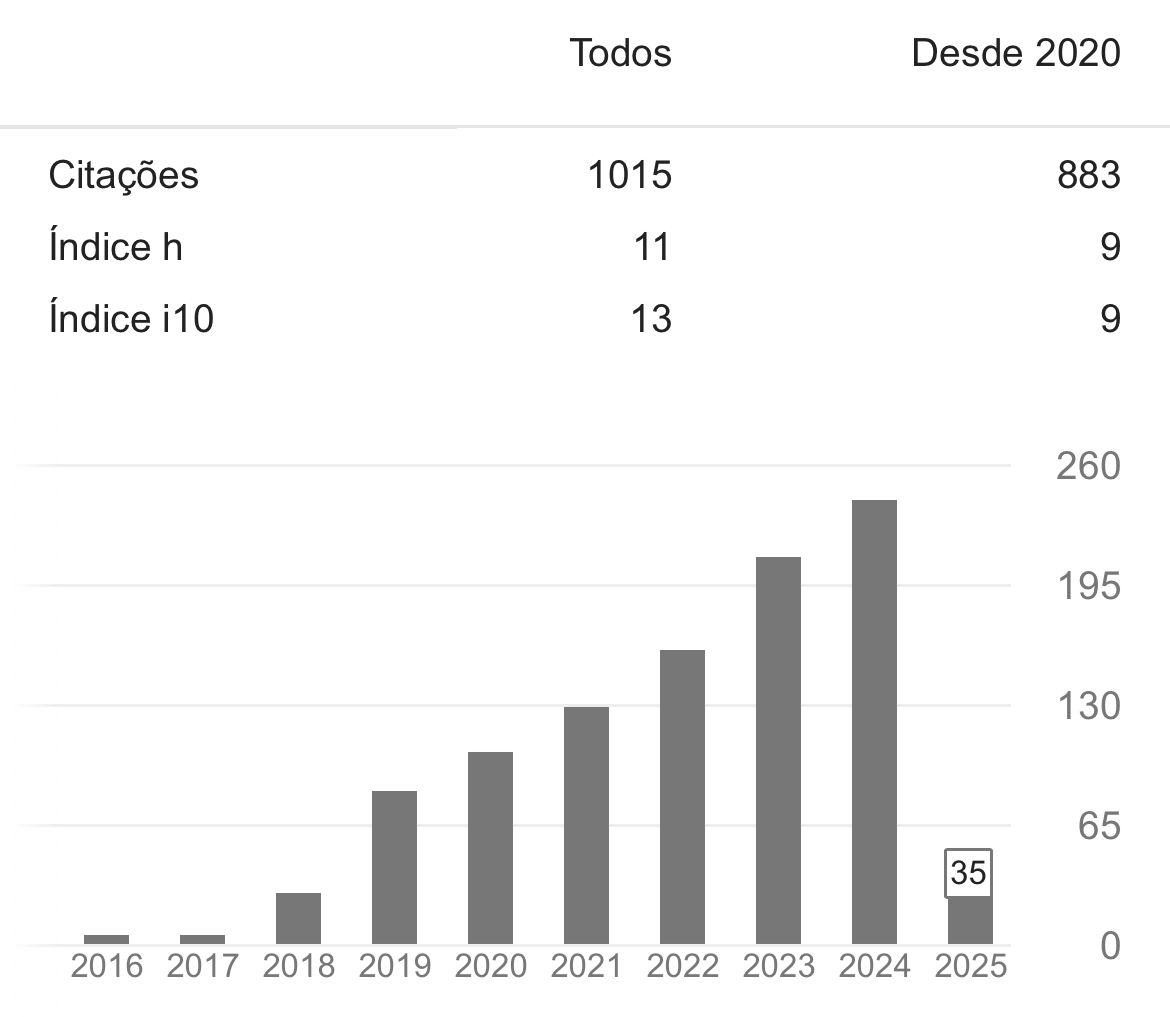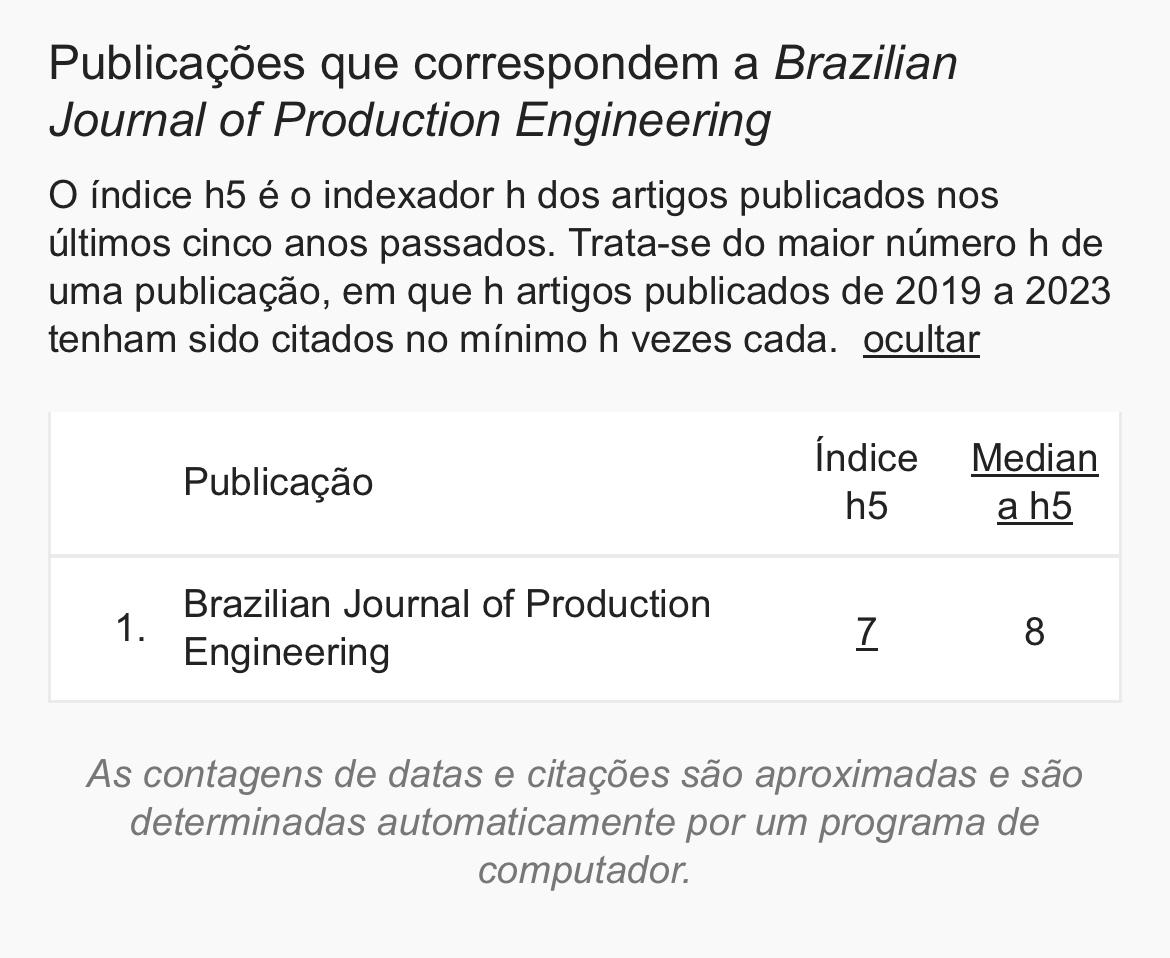TRATAMENTO DE EFLUENTE SINTÉTICO DE CORANTE AZUL DE METILENO POR ELETROFLOCULAÇÃO
Abstract
No presente estudo a técnica de eletrofloculação foi aplicada à remoção do corante azul de metileno em solução sintética. Colorimetria foi utilizada para avaliar o grau de remoção de corante do efluente. Testes foram feitos para sete combinações de temperatura da água e pH. A análise dos dados experimentais demonstrou que a quantidade de corante removido depende do pH, da temperatura e da interação entre estas duas variáveis.Downloads
References
AQUINO NETO, Sidney De e colab. Tratamento de resíduos de corante por eletrofloculação: um experimento para cursos de graduação em química. Química Nova, v. 34, n. 8, p. 1468–1471, 2011.
BRASIL. Resolução CONAMA no 357, de 17 de março de 2005. Disponível em: <www.mma.gov.br>. Acesso em: 22 nov 2017.
BRASIL. Resolução CONAMA no 430, de 13 de maio de 2011. Disponível em: <www.mma.gov.br>. Acesso em: 22 nov 2017.
CAÑIZARES, Pablo e colab. The pH as a key parameter in the choice between coagulation and electrocoagulation for the treatment of wastewaters. Journal of Hazardous Materials, v. 163, n. 1, p. 158–164, 2009.
CERQUEIRA, A e RUSSO, C e MARQUES, M R C. Electroflocculation for textile wastewater treatment . Brazilian Journal of Chemical Engineering . [S.l.]: scielo . , 2009
GOLDER, A K e colab. Electrocoagulation of methylene blue and eosin yellowish using mild steel electrodes. Journal of hazardous materials, v. 127, n. 1, p. 134–140, 2005.
HAMDAOUI, Oualid e CHIHA, Mahdi. Removal of Methylene Blue from Aqueous Solutions by Wheat Bran. Acta Chimica Slovenica, v. 54, n. 2, 2007.
KHANDEGAR, V. e SAROHA, Anil K. Electrocoagulation for the treatment of textile industry effluent - A review. Journal of Environmental Management. [S.l.]: Academic Press. Disponível em: <http://www.sciencedirect.com/science/article/pii/S0301479713004465>. Acesso em: 21 nov 2017. , 15 Out 2013
MERZOUK, B e colab. Studies on the decolorization of textile dye wastewater by continuous electrocoagulation process. Chemical Engineering Journal, v. 149, n. 1, p. 207–214, 2009.
MORENO-CASILLAS, Hector A e colab. Electrocoagulation mechanism for COD removal. Separation and Purification Technology, v. 56, n. 2, p. 204–211, 2007. Disponível em: <http://www.sciencedirect.com/science/article/pii/S1383586607000846>.
PABLO CAÑIZARES e colab. Coagulation and Electrocoagulation of Wastes Polluted with Dyes. Environmental Science & Technology, v. 40, n. 20, p. 6418–6424, 2006. Disponível em: <http://pubs.acs.org/doi/abs/10.1021/es0608390>. Acesso em: 17 out 2017.
WANG, Peifang e colab. Kinetics and thermodynamics of adsorption of methylene blue by a magnetic graphene-carbon nanotube composite. Applied Surface Science, v. 290, p. 116–124, 30 Jan 2014. Disponível em: <http://www.sciencedirect.com/science/article/pii/S0169433213020710?via%3Dihub>. Acesso em: 24 nov 2017.
YAGUB, Mustafa T e colab. Dye and its removal from aqueous solution by adsorption: a review. Advances in colloid and interface science, v. 209, p. 172–184, 2014.
ABER, S e AMANI-GHADIM, A R e MIRZAJANI, V. Removal of Cr(VI) from polluted solutions by electrocoagulation: Modeling of experimental results using artificial neural network. Journal of hazardous materials, v. 171, n. 1–3, p. 484–490, Nov 2009. Disponível em: <http://www.sciencedirect.com/science/article/pii/S0304389409009406>.
AQUINO NETO, Sidney De e colab. Tratamento de resíduos de corante por eletrofloculação: um experimento para cursos de graduação em química. Química Nova, v. 34, n. 8, p. 1468–1471, 2011.
BRASIL. Resolução CONAMA no 357, de 17 de março de 2005. Disponível em: <www.mma.gov.br>. Acesso em: 22 nov 2017.
BRASIL. Resolução CONAMA no 430, de 13 de maio de 2011. Disponível em: <www.mma.gov.br>. Acesso em: 22 nov 2017.
CAÑIZARES, Pablo e colab. The pH as a key parameter in the choice between coagulation and electrocoagulation for the treatment of wastewaters. Journal of Hazardous Materials, v. 163, n. 1, p. 158–164, 2009.
CERQUEIRA, A e RUSSO, C e MARQUES, M R C. Electroflocculation for textile wastewater treatment . Brazilian Journal of Chemical Engineering . [S.l.]: scielo . , 2009
GOLDER, A K e colab. Electrocoagulation of methylene blue and eosin yellowish using mild steel electrodes. Journal of hazardous materials, v. 127, n. 1, p. 134–140, 2005.
HAMDAOUI, Oualid e CHIHA, Mahdi. Removal of Methylene Blue from Aqueous Solutions by Wheat Bran. Acta Chimica Slovenica, v. 54, n. 2, 2007.
KHANDEGAR, V. e SAROHA, Anil K. Electrocoagulation for the treatment of textile industry effluent - A review. Journal of Environmental Management. [S.l.]: Academic Press. Disponível em: <http://www.sciencedirect.com/science/article/pii/S0301479713004465>. Acesso em: 21 nov 2017. , 15 Out 2013
MERZOUK, B e colab. Studies on the decolorization of textile dye wastewater by continuous electrocoagulation process. Chemical Engineering Journal, v. 149, n. 1, p. 207–214, 2009.
MORENO-CASILLAS, Hector A e colab. Electrocoagulation mechanism for COD removal. Separation and Purification Technology, v. 56, n. 2, p. 204–211, 2007. Disponível em: <http://www.sciencedirect.com/science/article/pii/S1383586607000846>.
PABLO CAÑIZARES e colab. Coagulation and Electrocoagulation of Wastes Polluted with Dyes. Environmental Science & Technology, v. 40, n. 20, p. 6418–6424, 2006. Disponível em: <http://pubs.acs.org/doi/abs/10.1021/es0608390>. Acesso em: 17 out 2017.
WANG, Peifang e colab. Kinetics and thermodynamics of adsorption of methylene blue by a magnetic graphene-carbon nanotube composite. Applied Surface Science, v. 290, p. 116–124, 30 Jan 2014. Disponível em: <http://www.sciencedirect.com/science/article/pii/S0169433213020710?via%3Dihub>. Acesso em: 24 nov 2017.
YAGUB, Mustafa T e colab. Dye and its removal from aqueous solution by adsorption: a review. Advances in colloid and interface science, v. 209, p. 172–184, 2014.
Downloads
Published
How to Cite
Issue
Section
License
Copyright (c) 2017 Brazilian Journal of Production Engineering - BJPE

This work is licensed under a Creative Commons Attribution-NonCommercial-ShareAlike 4.0 International License.

















































































